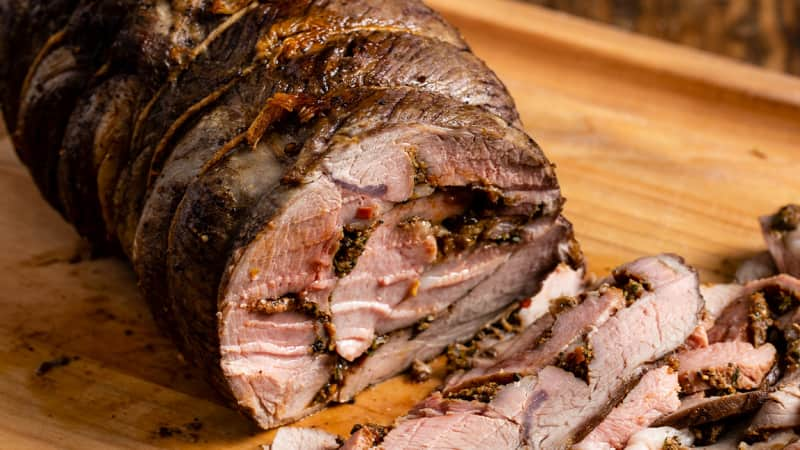Whether you’re roasting, grilling, or pan-frying, the flavor of your meat is a nuanced and impressionable thing. Seasonings, marinades, and cooking temperatures can all influence this but so can something else that might surprise you.
Domestic vs. Imported Lamb: Same Protein, Different Flavors
Published Apr. 13, 2022.

The flavor of your lamb is already impacted by factors that occur before you even buy it: largely, its feeding habits based on its origin.
Sign up for the Cook's Country Dinner Tonight newsletter
10 ingredients. 45 minutes. Quick, easy, and fresh weeknight recipes.
When you’re out shopping for a leg or rack of lamb, you’ll most likely see two options available for purchase: domestic or imported. Each of these come with its own considerations, but the greatest impact on flavor is how each group of livestock is fed, and many believe the differences in feeding regimens significantly impact the quality of the meat.
Domestic lamb is typically grass-fed and grain-finished, making the meat somewhat sweeter and more mild in flavor. Thanks to its feed, it is also often larger than its counterparts in the southern hemisphere. Imported lamb, often sourced from Australia and New Zealand, is solely grass-fed and believed to have a richer, more gamy taste.
If you prefer a milder taste, then you should probably buy domestic lamb. If you prefer a stronger, meatier flavor, then you should opt for imported. And even then, the gamy taste of imported lamb can be controlled for by trimming the fat, where the majority of this flavor resides, from the meat.
How To Roast Everything
How to Roast Everything is the first cookbook from America’s Test Kitchen devoted to the art and science of roasting, pulling together decades of test kitchen experience and knowledge to help you roast everything from meat and fish to vegetables and fruit.When livestock are fed a grain-forward diet—even for just a portion of their lives—it carries a significant amount of flavor into the meat. This grain gives domestic lamb a milder, sweeter taste, while imported lamb retains the gamier, more “lamby” flavor, undiluted by the flavor of the grain.
All in all: Neither cut should be seen as better or worse but simply a matter of taste.
If you’d like to experiment with both kinds of lamb, why not try Cook’s Country’s Roast Leg of Lamb with Garlic-Herb Crust or our delicious Herb-Stuffed Leg of Lamb with Riesling Juice? It could help you decide your preference.
